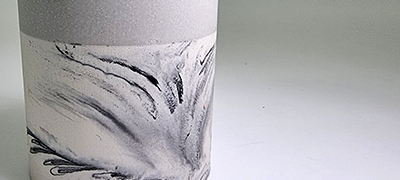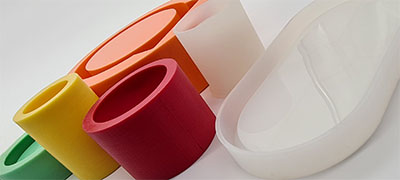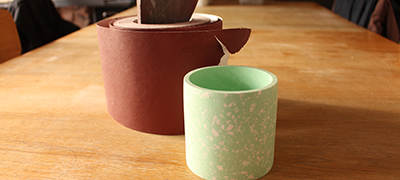Who loves maths?! If you do, figuring out your mould volumes might come easy to you. On the other hand you might think ‘mould volumes’ and draw a blank. Luckily you don’t need to be a maths whizz to work out how much Jesmonite liquid and powder you need to fill your mould. The good news? It can all be done on a calculator!
We do have a Jesmonite calculator here at Polysil that does the hard work for you, but if for whatever reason the internet breaks, it’s good to know how to work it out yourself.
There are two ways to do this. For each method, you need to start by filling your mould with water and then weigh the water on your weighing scales in grams. Don’t try to cut corners by putting your mould on your scales, setting them to 0 grams and then tipping your water into the mould. Speaking from experience, you could spill the water and break your scales, leaving you guessing the amount of cheese you need for dinner that night! Instead, fill your mould with water away from the scales, put a jug on the scales, set them to 0 grams and tip the water into the jug. Much safer for your scales!
Once you have your water volume in grams, write it down and use our Jesmonite calculator to find out how much you need.
There are two methods you can use to work out your mould volumes. We’ve gone through both below so you can decide which you prefer:
METHOD A
Halve the water volume to get your liquid volume
Multiply the liquid volume by 2.5 to get your powder volume
EXAMPLE:
Water volume = 340 grams
340 ÷ 2 = 170
Liquid volume = 170 grams
170 x 2.5 = 425
Base volume = 425 grams
METHOD B
Multiply your water volume by 1.75 to get the total amount of Jesmonite needed
Divide the total amount of Jesmonite needed by 3.5 to get your liquid volume
Multiply your liquid volume by 2.5 to get your base volume
EXAMPLE:
Water volume = 340 grams
340 x 1.75 = 595
Total Jesmonite = 595 grams
595 ÷ 3.5 = 170 grams
Liquid volume = 170 grams
170 x 2.5 = 425
Base volume = 425 grams
Still with us? It really is much easier than it sounds and once you get into the habit of working out your mould volumes, you won’t even need to look at this guide, you’ll just know the formula off by heart. Don’t forget to keep a notepad and write down the volumes of liquid and powder needed for each one of your moulds. That way, you won’t need to keep repeating this process and you can crack straight on with the fun stuff!
If mould volumes have blown your mind a little, we’re here to help! Drop us a message on WhatsApp (bottom right) for a helping hand!


